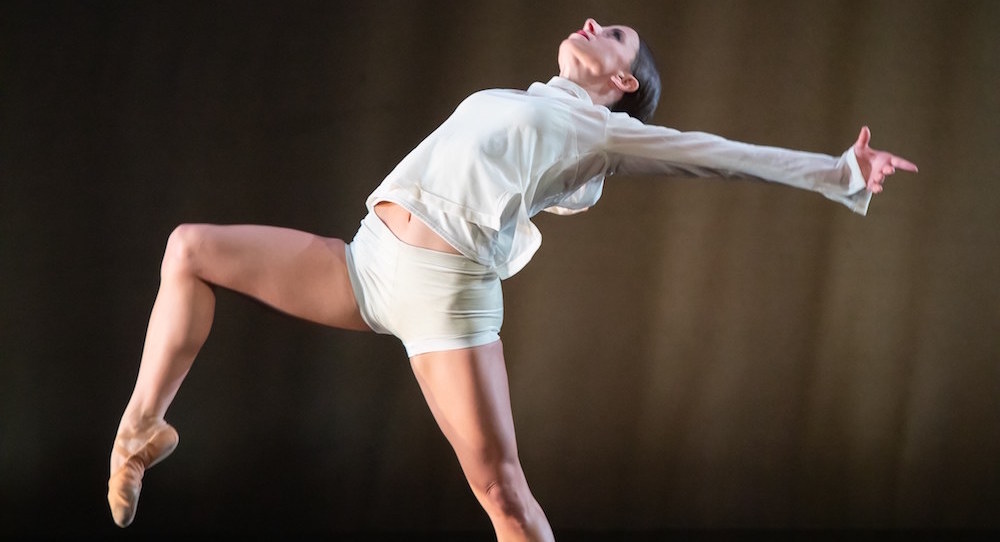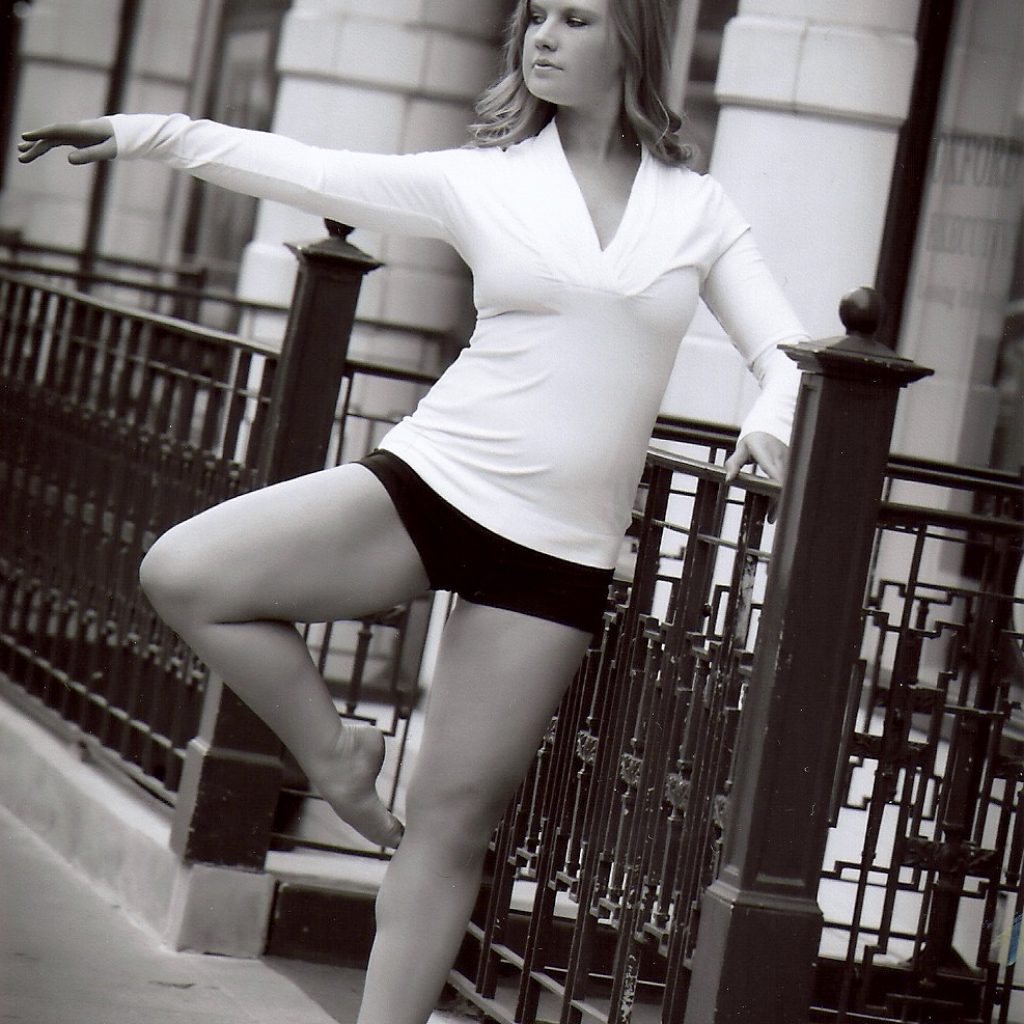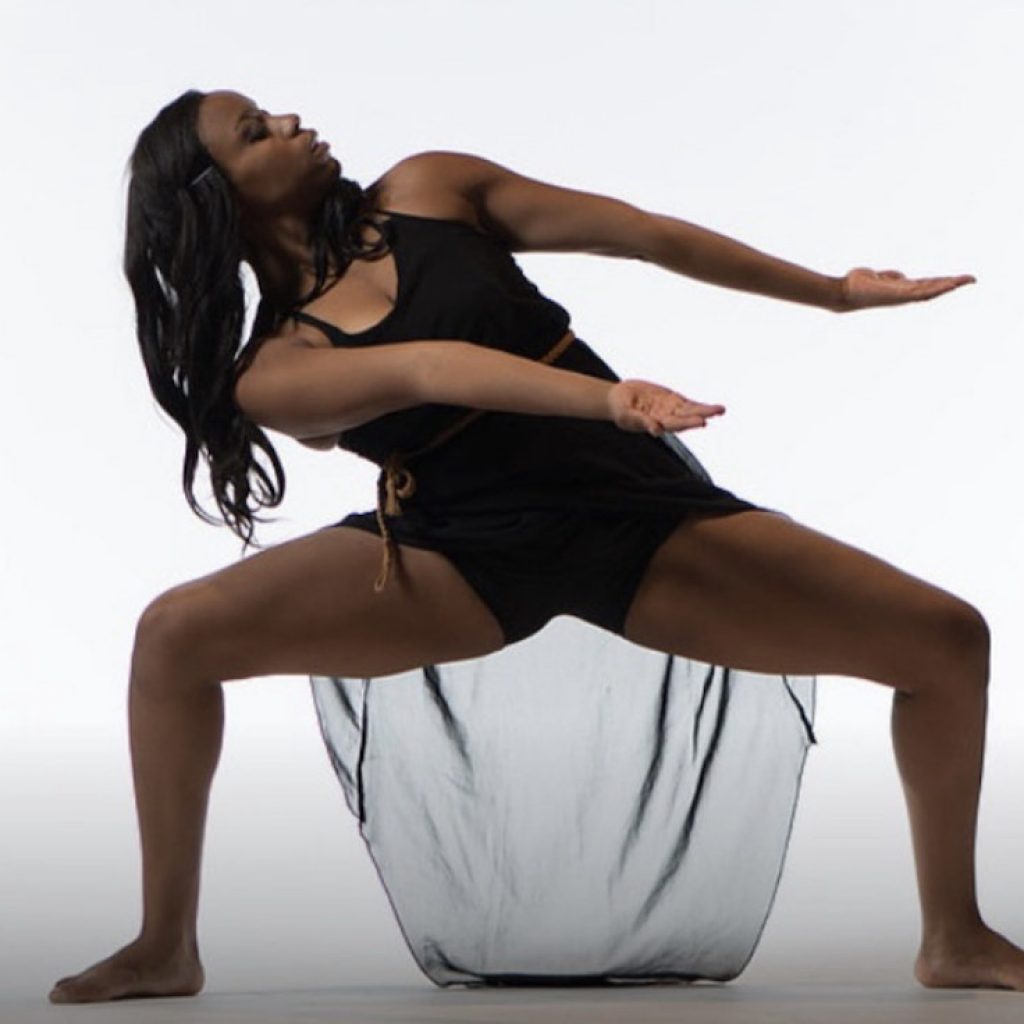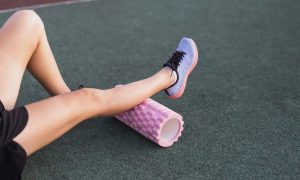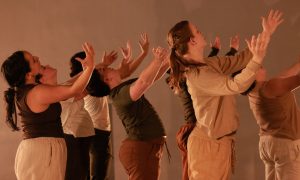You’re sitting in a grand theater, watching your peers perform beautifully. Or maybe you’re scrolling Instagram and their opening night pictures fill your feed. You’re not with them – because you’re injured. All of you wants to dance, but it’s just not physically possible right now – or if you tried you could make your recovery more prolonged (and maybe even less successful).
Apart from that plain old FOMO, you think about things like how you might fall behind your fellow dancers – and even who you are and what you’re worth if you’re not dancing. You try to not sulk, but you don’t feel great. Dear reader, maybe you’ve been there, maybe you haven’t, maybe (knock on wood) you’ll be there someday. Wanting to dance but being unable to, because of injury, is a (sadly) fairly common experience amongst dancers – and it’s nothing like easy.
In order to learn more about this experience, as well as to come away with some concrete tips and tools for how to get through it more easily, Dance Informa speaks with two mental health professionals: Sports Psychology Consultant for Dancers Dr. Chelsea Pierotti, and Natiya Lozano (MS, LCPC, R-DMT, BC-TMH, RYT-200). We also speak with Lauren Difede, a dancer with Newport, RI-based Island Moving Company, who is toward the end of the recovery period for a labral tear (she’s been there, done that, and quite recently).
#1. Addressing identity: “Who am I if not ‘dancer’?”
Both Dr. Pierotti and Lozano bring up – right off the bat – identity as a crucial aspect of this dynamic. Dr. Pierotti notes how when being a dancer is your whole identity, if you’re not dancing, you can all too easily wonder just who you are. “It’s comforting to have a label, and when you don’t have that, what happens?”
She notes how all of that can be even more challenging for teens and pre-teens. Simply by (mostly) universal human development, identity is being formed at this time of life – so it can already be fluctuating and turbulent. It can also be all-too-easy to only see the short-term at that age, with longer-term impacts “hard to wrap your head around,” Dr Pierotti explains — in other words, dancing, even when it might mean worsening and/or prolonging the injury, in order to get that “short-term fix” of staying connected with one’s dancer identity.
Lozano argues, however, that you still are a dancer, even if you can’t dance at this time – and so much more. “Dance is a part of you, but you are made up of many parts,” she affirms. Lozano also acknowledges the creative drive that might be part of that “dancer” identity dynamic. The good news is that there a plethora of ways to satisfy and exercise that creative urge!
“Honor your creative self by using this time to connect with other creative outlets that make you you — singing, writing, choreographing, making [visual] art, et cetera,” Lozano recommends. She also suggests visualization as a way to stay connected with your dance artistry – perhaps visualizing the sort of more athletic, technical movement that’s not possible and/or advisable during your recovery period. You can find a calm, comfortable position, soften your gaze or close your eyes, and turn on music, she describes. “Allow your mind to visualize you performing a dance, or even improving.”
Difede, for her part, doesn’t directly reference identity in her recovery story. She does, however, describe a deep drive to be performing with her company – coming from a profound part of her. She was recovering, and therefore not performing, while her company presented two different programs. She sat in on rehearsals for those programs, and just couldn’t watch the pieces in which she’d performed – despite sincerely wanting to be supportive of fellow dancers taking over roles that she had danced. She had to leave the room.
It was one of those moments that made Difede more aware of where she was and what she needed (and didn’t need), mentally and emotionally, at that time. She’s enjoyed being able to watch the company’s programs and cheer on her dancing colleagues – but, of course, “you want to be doing the thing, not watching the thing. You don’t want to stop!” she affirms.
#2. Being intentional and mindful, but keeping connected: Discretion and connection
Difede wasn’t alone in those feelings, thankfully. She shares how it was immensely helpful to have the support of dancers in the company who had gone through similar experiences. “No one really knows what it’s like until they go through it,” she notes. Even if through signs of support as simple and seemingly small as a gentle hand to her shoulder in tough moments, it helped Difede to know that she wasn’t alone in what she was going through. “Otherwise, it’s like a little island. Accept the support, and know that it’s okay to feel how you feel,” she advises.
Lozano echoes that sentiment. “Honor your feelings and emotions as they surface. Not doing the thing that you love to do at the moment is tough!” She encourages dancers in these situations to, as best they can, give themselves grace and understanding for their current emotional landscape. “Be your biggest cheerleader in understanding that this is tough, and that you can do tough things!”
Dr. Pierotti, for her part, underscores the importance of maintaining social connection during recovery periods. Often, dancers’ social circles are mostly other dancers, so not going into the studio and theater comes with a big risk of social isolation – on top of the all of the mental and emotional challenges that come with a non-dancing recovery period. For quality of life, as well as for better recovery outcomes, it’s vital to maintain those social ties in some way. Dance companies and teams can keep injured peers involved through things like finding non-dancing ways for them to be involved and to contribute, for example.
On the flip side of that, it also helped Difede to have some discretion when it came to what, when, and with whom she shared information about her injury and recovery. The most recent program in which she performed was in March of this year. She made the conscious choice to not tell her fellow company members – apart from a few very close friends in the company – about the whole situation (the injury, surgery and recovery period) until after that run. Difede also only divulged information about her injury on social media when she sort of had to – when questions out there began to be unavoidable and she had to address it all.
There were sensitive aspects at hand, both medically and socially, she explains. “It would have been really easy [for my castmates] to get overly concerned, and all I wanted for that last show [before my surgery and recovery] was to be present and have a great experience with my company and choreographers.”
#3. A holistic approach: Addressing the mind to help heal the body, and vice versa
Difede had a sense that she needed protect her mental and emotional space during that challenging time – and Dr. Pierotti affirms that addressing the needs of the mind and spirit is indeed crucial in these cases. She notes that through injury and recovery, the focus tends be on the physical, medical and technical: what needs to be done to get back the dancer’s body back to performing full-out again, as soon as possible.
Yet, without addressing a recovering dancer’s mental and emotional needs, recovery won’t be as quick and smooth as it could be (apart from a better subjective quality of life for the dancer, of course). With clients in these situations, Dr. Pierotti uses Cognitive Appraisal – a “step back” to check in with what’s really happening, as she describes it: the facts of the situation, how the dancer is feeling about it, and the like.
“If your cognitive space is ‘this is all over, it’s terrible,’ your emotional response will be anger and grief. The response to that might be things like disconnecting from peers and skipping physical therapy. If we can shift that [cognitive space], then we can we can shift the behaviors” – to those actions that lead to better recovery outcomes, Dr. Pierotti explains. “When you have a mental and physical approach to rehab, that’s when you can get to that place.”
With clients recovering from injury, she also breaks down concrete goals: both physical (such as hitting benchmarks in physical therapy) and social/emotional (for instance, making efforts to stay connected with dance friends). She also notes that patience with the physical therapy process is important; it’s crucial to accept that physically and technically speaking, you won’t be able to do what you did pre-injury right away. It’ll take the time that it takes.
To her sincere credit, Difede has demonstrated this sort of perspective. She’s been diligent about her physical therapy, and has taken genuine pride and pleasure in “small victories” like getting her extension just a bit higher. “Today was the first day I did big jumps in class, and it was fine. Every tiny little step is a huge win!” she shares joyfully.
Lozano also underscores the importance of patience with the recovery process. “Let go of your time limits for, and expectations of, your recovery.” Applying unrealistic expectations can only set you up for disappointment and frustration, she notes. “Grant yourself permission to let go of the ‘I need to be healed by this time or I need to be ready by this show,’ et cetera. Allow your body to take all of the time it needs.”
At the same time, as Difede has illustrated, be diligent about your PT and other recovery work. “Treat your healing journey the same way you would treat preparing for an upcoming performance or dance competition: with time, dedication, practice and persistence,” Lozano recommends.
Lozano also says that this situation can be an opportunity to truly reconnect with your body and how it wants to move. “Can you deepen the inner voice that tells you how it that feels good to you [to move] and honors where your body is right now?” she asks. As potential vehicles for that kind of exploration, she suggests gentle, mindful movement such as stretching, yoga and walking (all with a doctor’s permission, given where a dancer might be in their recovery).
#4. Post-injury growth: Coming out stronger
The idea of “a silver lining” could understandably ring hollow to dancers recovering from injury – in the sometimes agonizing space of wanting nothing more than to dance and not being able to. Yet, for Difede, such a silver lining has been real. “My injury and recovery honestly kind of gave me a different outlook. I’ve found myself backing away from any kind of pettiness in the room,” she shares.
After the kind of situation that she’s been through with her injury, ”you still absolutely love the studio, but whether or not you’re right about count five…that petty stuff doesn’t matter; it’s the bigger picture,” she asserts. Even physically, her physical therapy has made her physically stronger and kinetically aware, she notes.
In agreement, Dr. Pierotti is firm: “You’re going to come out stronger,” she says with a smile. She does impart that idea to clients in injury recovery, although how she does so depends on age. Younger dancers most often need a clear real-life example (either from their own life or that of someone close to them) of being resilient through adversity, and coming out of it changed for the better. High school and college-aged dancers, however, can hear and understand the idea of “out of adversity comes opportunity” without such a concrete example (although that never hurts).
Having gone through the process, Difede is also clear on the power of prevention – through PT and modifying technique when needed, for example. She also emphasizes the key place of the support structure in a dancer’s corner: parents and teachers for younger dancers, choreographers, company leadership, and a medical team (surgeons, physical therapists, et cetera as needed) who really “knows you.”
With such a base of support, particularly with respect to her employers, Difede “felt confident that I would have a career to return to when I was ready. I was able to focus on myself and recovery, without fear that I wouldn’t have something to come back to when that time came,” she shares.
If we want injured dancers to get back to the studio and the stage as soon and with as little turmoil as possible, doing what they are driven to do (and are lovely doing), it has to be all hands on deck. Everybody has to be doing their part with intention, care and truthfulness. “We’re past the age of ignoring problems and stuffing them under the rug,” Difede affirms.
By Kathryn Boland of Dance Informa.


